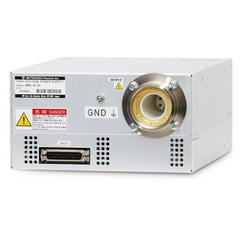An electron microscope is a microscope that observes objects by applying electrons (electron beams) to them. In ordinary microscopes (optical microscopes), light (visible light) is shone on the object to be observed, and the reflected light is magnified to observe the object. However, electron microscopes use electrons on the object instead of light.
The wavelength of an electron beam is much shorter than that of visible light, which allows for significantly higher resolution. This superior resolution makes it possible to observe ultrafine structures and objects that are impossible to see with a conventional optical microscope.
There are many types of electron microscopes depending on the application and purpose, but they can be broadly divided into two types: Transmission Electron Microscopes (TEM) and Scanning Electron Microscopes (SEM).
Transmission electron microscopes apply an electron beam to a sample. The electrons that pass through are magnified by electromagnetic lenses and projected onto a fluorescent screen or digital detector to form an image. In a TEM, the electron beam is accelerated by a high voltage, giving it enough energy to pass through the specimen. Therefore, only thin materials that can be penetrated by an electron beam can be used for observation.
A scanning electron microscope (SEM) scans the surface of a specimen with a finely focused electron beam in a vacuum. The microscope then forms an image by detecting the signals produced, such as secondary or backscattered electrons emitted from the surface. This technique provides detailed images of the sample's surface topography and can also be used to determine its elemental composition.
Matsusada Precision offers a wide range of high-performance power supplies suitable for various electron microscope applications.

- Related words:
-
- Scanning Electron Microscope (SEM)
- Transmission Electron Microscopes (TEM)
- Electron Beam (E-beam)
- electron gun
- Electron Beam Lithography
- electron optics
Recommended products
We offer power supplies for electron guns and electron lenses for electron microscopes. These high-voltage power supplies can also be customized to meet your requirements.




